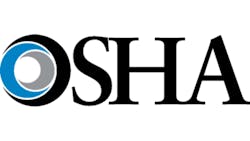The U.S. Department of Labor’s Occupational Safety and Health Administration cited Reliable Castings Corporation, an aluminum foundry in Sidney, OH, for 14 safety and health violations. According to the agency, an inspection at the site found “workers were exposed to struck-by, crushing and amputation hazards.
The Ohio foundry produces nonferrous sand and permanent mold castings for numerous industrial markets. In addition to its plant in Sidney, OH, where about 140 workers are employed, Reliable Castings operates a plant in Cincinnati with about 130 workers.
OSHA stated it has conducted 14 previous inspections at the Ohio foundry since 1999, resulting in the 56 cited violations.
The latest violations carry penalties that total $293,700. The citation was announced in late December. In line with OSHA regulations, Reliable Castings was given 15 business days from receipt of the citations to comply, request an informal conference with OSHA's area director, or contest the citations and penalties before the independent Occupational Safety and Health Review Commission.
"OSHA's inspectors found a facility with multiple hazards and where safety was continually compromised," stated OSHA area director Kim Nelson. "Reliable Castings Corporation has a responsibility to train its workers and to implement all required safety procedures."
Among the citations, OSHA issued one for a “repeat violation” concerning the foundry’s failure to de-energize an industrial robot and implement lockout/tag out procedures prior to performing servicing and maintenance work on the equipment. The agency classifies repeat violations as those for which an employer has been cited previously (or for a similar violation of a standard, regulation, rule or order at any other facility in federal enforcement states within the last five years.)
Reliable Castings was cited for a similar violation at the Sidney foundry last April.
Four of the citations were issued for “willful violations,” concerning the foundry’s failure to develop lockout procedures for servicing and changing molds, prevent exposure to molten aluminum splash, inspect chains, and prevent use of an unapproved work platform to lift workers with the fork truck.
OSHA categorizes as “willful violations” those committed with intentional knowledge or voluntary disregard for the Occupational Safety and Health Act of 1970, or with plain indifference to worker safety and health. Under the law, employers are responsible for providing safe and healthful workplaces for their employees.
Eight of the violations were categorized as “serious,” and involved failing to install guardrails near ovens and floor openings to prevent falls, perform PPE assessments, require use of face shields and hard hats, ensure adequate guarding on 21 machines, provide lockout procedures, ensure an electrical cabinet is not exposed to water, label lifting devices with load capacities, and provide safety data sheets to workers.
A “serious violation” is issued when OSHA finds there is substantial probability that death or serious physical harm may result from a hazard about which the employer knew, or should have known.
Two more violations, determined to be “other than serious,” concern Reliable Castings failure to have a hazard assessment certification and no-load rating sign above a storage area. “Other-than-serious” violations are those with a direct relationship to job safety and health, but not likely to cause death or serious physical harm.
OSHA noted that the nature and severity of violations meant the company had been placed in the Severe Violator Enforcement Program, which mandates targeted follow-up inspections to ensure compliance.
About the Author
Robert Brooks
Content Director
Robert Brooks has been a business-to-business reporter, writer, editor, and columnist for more than 20 years, specializing in the primary metal and basic manufacturing industries. His work has covered a wide range of topics, including process technology, resource development, material selection, product design, workforce development, and industrial market strategies, among others.
